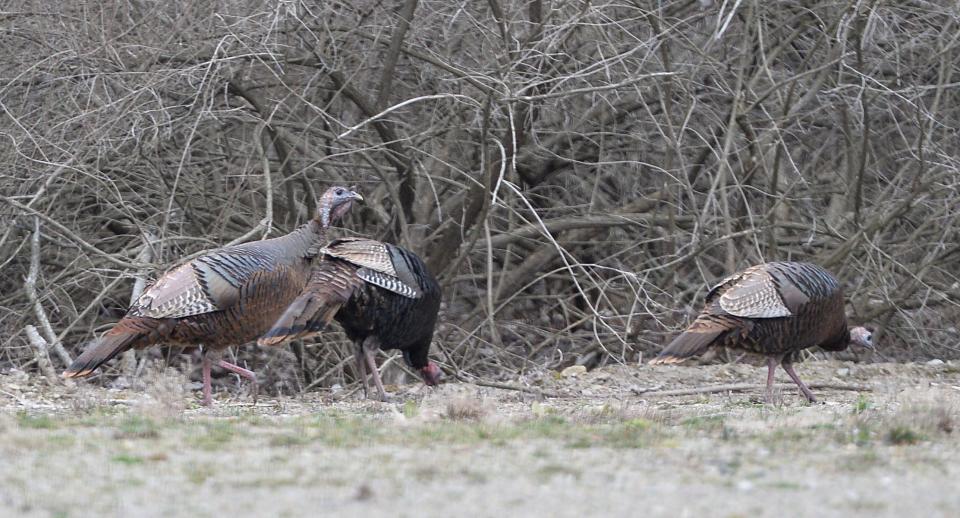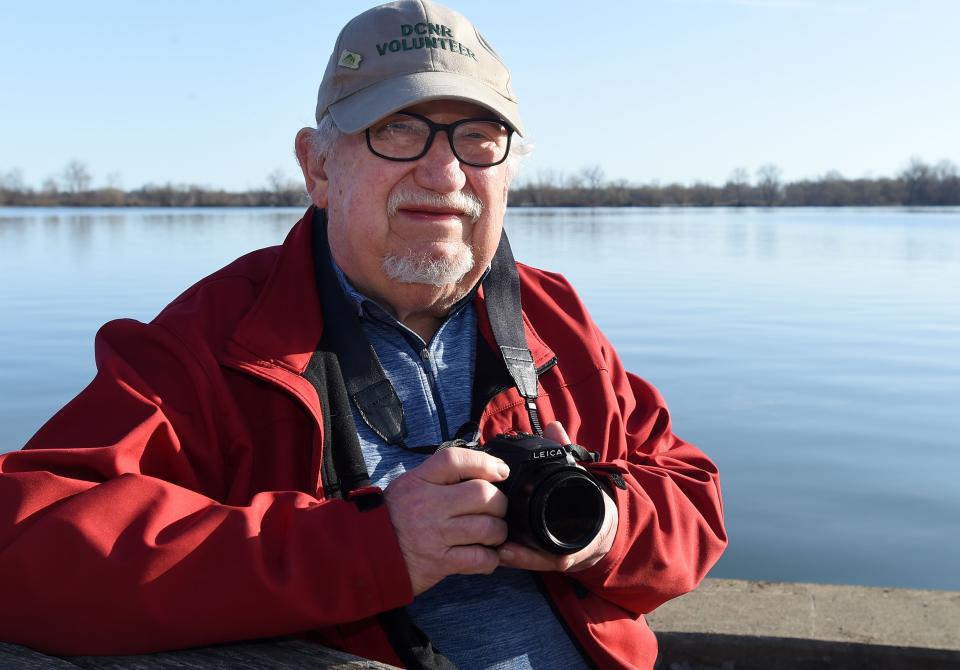Wild turkeys are getting active. Here's where to look for them at Presque Isle State Park.
Coming up on a year ago, I drove out to Presque Isle State Park to photograph what looked to me to be a beautiful March sunrise and a few other pictures. To my surprise, as it was just a bit early, seven wild turkeys were in the woods by the Presque Isle Marina. Two huge males were in a strutting contest around hens that were trying to find breakfast.
So, why are humans and hen turkeys so fascinated with gazing upon all 18 tailfeathers of a puffy, fanned gobbler? These displays can range from ornate to simple, and all are designed to allow the male to show off his plumage and colors in hopes of impressing a female to result in mating. However, this strutting and display are not limited to the spring mating season. This display has other meanings in different situations.
Outside the typical breeding season, strutting is also used as a show of dominance in the presence of other males. When endangered by predators, the male can use strutting as a defense, although male wild turkeys are a formidable foe in any fight with most predators. Many smaller predators have gotten the losing side of a skirmish with a wild turkey. Their thick and heavy feathers protect them from many injuries.
The wild turkeys that we see on Presque Isle and just about everywhere in northwestern Pennsylvania are the same species as the domestic turkey, which initially came from a southern Mexican subspecies that was known as early as 1509.
When Mexico fell to Cortez in the early 1500s, wild turkeys in the United States had already been domesticated. It was shortly after that they were introduced into Europe, where they quickly became established as barnyard fowl.

In this area, wild turkeys were abundant and became the main food for the Native Americans of the region. Their meat and feathers were essential to the early settlers and Native peoples along the Lake Erie shoreline. However, habitat destruction and severe overhunting nearly destroyed the species in North America by the late 1800s.
The wild turkeys on Presque Isle love the environment of the park. Wild turkeys prefer hardwood and mixed conifer-hardwood forests with scattered openings, such as fields, orchards and seasonal marshes. They are adaptable to virtually any dense native plant community.
Despite their weight, wild turkeys, unlike the farm-raised domesticated ones we see at Thanksgiving, can fly a quarter of a mile at a low height. They also have excellent eyesight, but their vision is inferior at night. Most turkeys will head for the trees at twilight and roost well off the ground, up to 20 to 25 feet. Turkeys have learned it is much safer to sleep here in numbers than to risk being victim to predators that hunt at night.
A male turkey, which can be as much as 4 feet long, has a bluish head spotted with wattles, growths on its throat and neck front. Their heavy bodies are covered with iridescent copper-brown feathers, variously striped and barred. The paler, slimmer female is usually no longer than three feet and lacks the large wattles.
Mornings are best if you want to see if you can experience the wild turkey mating display, which is just starting and will go on for about a month. The Presque Isle Lighthouse area, woods and trails have always been excellent places to find turkey most of the year. Pine Tree Trail is also usually pretty good, and at times Graveyard Pond trail might work well. Slow, quiet and careful moving on the trails works best. I saw six hens and two males at the end of the Gas Well Trail where it meets Marina Lake.
Go out to the park and see the fascinating mating display of the park’s wild turkey population.
See you on the park!

Gene Ware is the author of 10 books. He serves on the board of the Presque Isle Light Station and is past chairman of the boards of the Tom Ridge Center Foundation and the Presque Isle Partnership. Email him at ware906@gmail.com.
This article originally appeared on Erie Times-News: Wild turkeys strut their stuff at Presque Isle State Park

